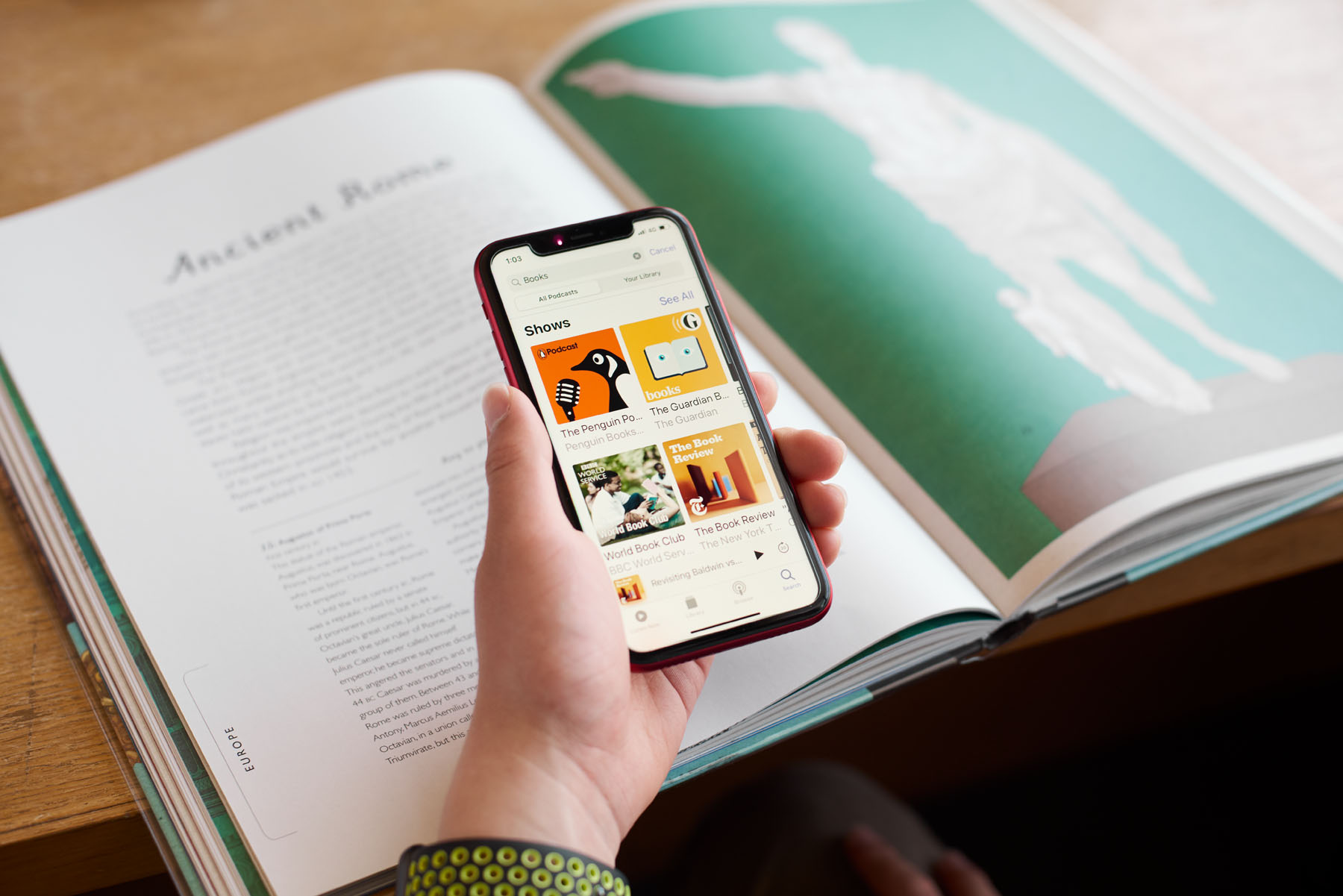Issue 130
Term 3, 2024
- Feature article
- Articles
-
- Elevate your practice at the School Library Association of New Zealand Aotearoa (SLANZA) Conference
- Tonight … I’ll be reading! a novel approach to holiday reading
- Insights from the Discovering a Good Read Survey
- Teacher librarian leadership and generative AI: An opportunity for leading innovation
- For your reference
- Regular features
Download this issue
Teacher librarian leadership and generative AI: An opportunity for leading innovation
Teacher Librarian Matthew Boggon on the pivotal role of teacher librarians in guiding schools through the AI revolution.

Generative artificial intelligence (AI), such as ChatGPT and Perplexity, is undeniably a revolutionary development in the information landscape, and therefore, by extension, the education landscape. The expanse of generative AI is enormous. It has the potential to be used in generating programming, lesson resources, tasks, assessment as well as to source further information.
It is also a pathway for students to conduct wider research, in much the same way one would type a prompt into a search engine. This has been acknowledged by the New South Wales Department of Education (NSW DoE) with the development of NSWEduChat, a generative AI model marketed as being a ‘private, safe and secure implementation of generative AI’ (n.d.). The NSW DoE has also established an executive leadership group tasked with ‘implementing policy, guidance and solutions’ as it relates to the use of AI in schools (2024). This executive leadership group defines one of its goals as ‘providing teachers with statewide professional learning’ (NSW DoE, 2024). It is clear that the NSW DoE believes that generative AI will become a mainstay in education, similarly to Web 2.0, and is therefore worthy of providing statewide support to develop teachers’ AI skillsets.
The implications for this AI revolution on school libraries and teacher librarians are extensive. These implications, succinctly discussed by Oddone (2023), confront issues such as the accuracy of information, the ethical considerations of using generative AI, our responsibilities as educators and developing effective teaching programs for students. However, another significant implication of the inclusion of AI in education is the leadership role that the teacher librarian will play in the staff setting. This leadership is critical to the role of a teacher librarian, outlined in the Australian Library and Information Association (ALIA) and Australian School Library Association (ASLA) joint statement on teacher librarians in Australia, stating that a teacher librarian will ‘lead and provide services and programs … including the professional development of staff’ and ‘be future-focused with an appreciation of emerging trends in education, technology and librarianship’ (2016). It is our duty as teacher librarians to not only embrace the inclusion of generative AI in our schools, but also actively lead our staff in utilising it, for we are the information authorities upon whom our schools depend.
What does teacher librarian leadership in the field of generative AI look like? Given the relative youth of generative AI in education, the teacher librarian acts as an innovative leader, providing staff with the skills necessary to drive an educational vision forward. The first step in accomplishing this is developing your own understanding of generative AI. A ‘foundational’ understanding of the world of generative AI is vital to the performance of informed leadership (Oddone, 2023). This will allow the teacher librarian to better understand the greater educational directives regarding generative AI, and form them into their own context, leading to the next step in leadership, the unification of a school strategic vision.
The development of a strategic vision regarding generative AI with the school executive is a significant step that must be taken. In understanding the strategic vision of your school or institution, you are better equipped to unify the school library with the broader school plan, and therefore meet the needs of the wider school community (Oberg, 2011; Platt, 2017). You may begin this process by clearly defining the goals of the school library and aligning them with the school vision, utilising this connection to act in the best interests of your school (Kemp, 2017). In doing so, the teacher librarian is leading with a broader, more-inclusive sense of purpose. On one hand, you are serving the needs of your school community and students, but you are also situating yourself as an ongoing leadership figure in the field, maintaining the credibility and authority of the library and cementing its place as a modern information hub (Green, 2011).
Following the creation of a shared strategic vision with school executive staff, a teacher librarian must then consider their approach to professional development. It is crucial here to consider that you, as a teacher librarian, are the expert within your own context; you best understand the needs of your students, and therefore your staff. The manifestation of professional learning is entirely dependent on your school context.
It is important to firstly recognise that professional development for teaching must be delivered effectively for the learning to convey. Effective professional development involves the following principles: modelling of effective practice, coherent delivery, focus and collaboration (NESA, 2021). In crafting your professional learning, consider the needs of your staff, and succinctly transfer your expertise to them, offering collaborative opportunities and effective modelling. Your school is likely time-poor; if you have successfully reached this point, you have been trusted with the golden resource of time, and utilising it effectively is an important component of the trust relationship intrinsic to school leadership.
It may be suitable to provide targeted development programs, working with faculties according to their needs. A relevant example of this may be working with faculties where assessment is largely dependent on research components, such as History, Society and Culture, or Design and Technology, and provide an individualised, specialised program for idea generation and source acquisition using generative AI. Humphries (2023) outlines the significance of generative AI in research, discussing most significantly its ability to reduce the time and cost of research, indicating that developing these research skills using generative AI acts as skill development in the same way that research skill lessons and digital literacy programs often taught or supported by teacher librarians are. This is an extension of the work many teacher librarians are already successfully delivering.
You may find it more appropriate to consult an entire staff body, providing them with the relevant skills needed in order to access, use, understand and teach with generative AI, as well as consider its ethical implications and potential pitfalls. This aligns closely with a whole-school approach to generative AI and is a significant time-saver on the above development program. You may decide on a blended model, whereby a whole-school approach is initial used, with targeted approaches discussed with faculties.
Following the implementation of emboldening staff, a teacher librarian must gather and utilise evidence of its success. It is impossible for a teacher librarian to evaluate the success of their leadership without relevant data (Bentley et al., 2016). This evidence will come in multiple forms, such as:
- feedback from staff
- feedback from students
- inclusion of generative AI in programming and assessment
- teacher capabilities
- ongoing requests, communications and interactions with staff regarding their professional development.
This evidence may depict your leadership as wholly successful or, more likely, you may recognise avenues for future professional leadership as you seek to embolden staff with the ability to utilise generative AI in one or more areas. It is thus your role to collate the evidence and use it to inform your future practice. Similarly, it is also highly encouraged to remain up to date with research and literature regarding generative AI, so that you may continue to make informed, adaptive and responsive professional development for staff. Undertaking your own professional development opportunities will support you to create relevant, useful programs for your colleagues, inform your leadership and continue networking with people facing similar challenges.
Teacher librarian leadership in the information field does not ‘end’. The information landscape does not cease to develop. It is critical to recognise that generative AI is rapidly changing the landscape in which education exists, for all parties in the education process. Ultimately, the goal of leading our staff through this educational revolution is not to educate them and move on. Teacher librarians are key in the process of enacting cultural change, and the move towards the utilisation of modern information technologies in all aspects of teaching practice. We, as information experts, must continue to construct an education environment where students and staff are equipped with the necessary skills to navigate an ever-changing landscape.
Reference List
- Australian Library and Information Association & Australian School Library Association. (2016).
- Statement on teacher librarians in Australia. read.alia.org.au/file/649/download?token=OnBXt10r Bentley, E., Markless, S., Pavey, S., Shaper, S., Todd, S. & Webb, C. (2016). The innovative school librarian. Facet Publishing.
- Green, G. (2011). Learning leadership through the school library. Access, 25(4), 22-26.
- Humphries, M. (2023). History and generative AI. Teaching History, 57(3), 4-9.
- Kemp, J. (2017). Ten ways to advocate for your role as teacher librarian. Connections, 103(1), 6-7. New South Wales Department of Education. (n.d.). NSWEduChat. https://education.nsw.gov.au/teaching-and-learning/educationfor- a-changing-world/nsweduchat
- New South Wales Department of Education. (2024). Artificial intelligence in education. https://education.nsw.gov.au/teachingand- learning/education-for-a-changing-world/artificialintelligence- in-education
- New South Wales Education Standards Authority. (2021). Quality of teacher professional learning report. https://www.nsw.gov.au/sites/default/files/2022-11/Quality-of-teacher-professionallearning.pdf
- Oddone, K. (2023). Empowering school library staff to navigate the AI frontier. SCIS Connections, 126(1), 1-3.
- Oberg, D. (2011). Teacher librarians as cultural change agents. Connections, 79(1), 1-3.
- Platt, A. (2017). The challenge of implementing change. Connections, 103(1), 12-13.
